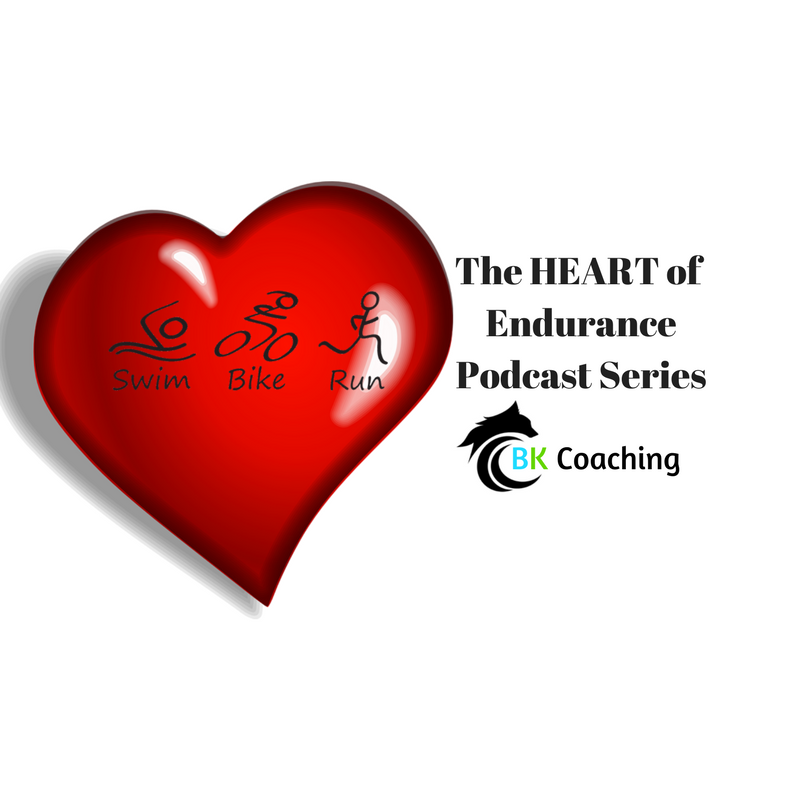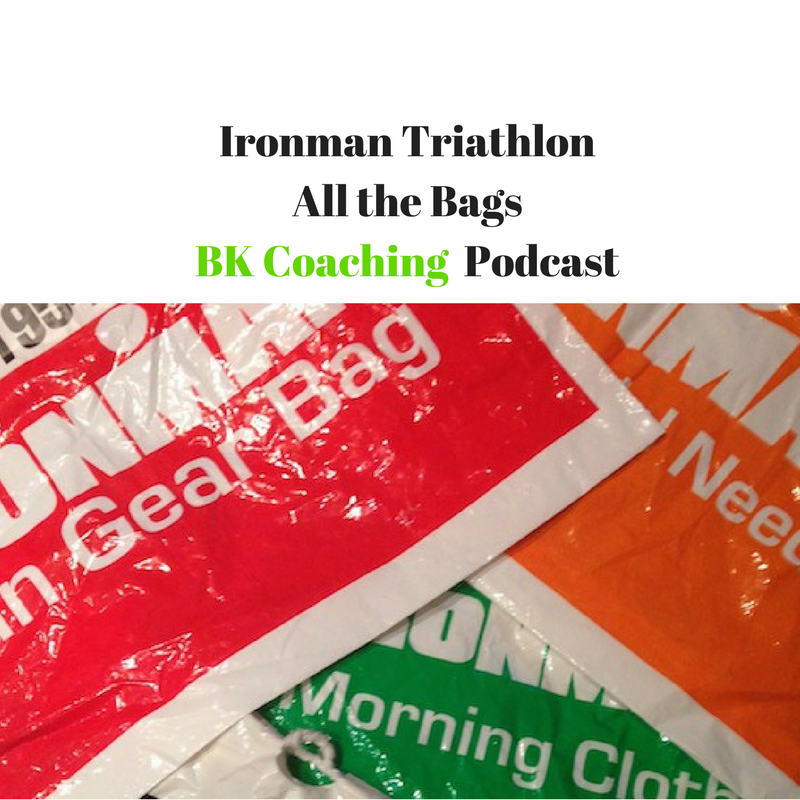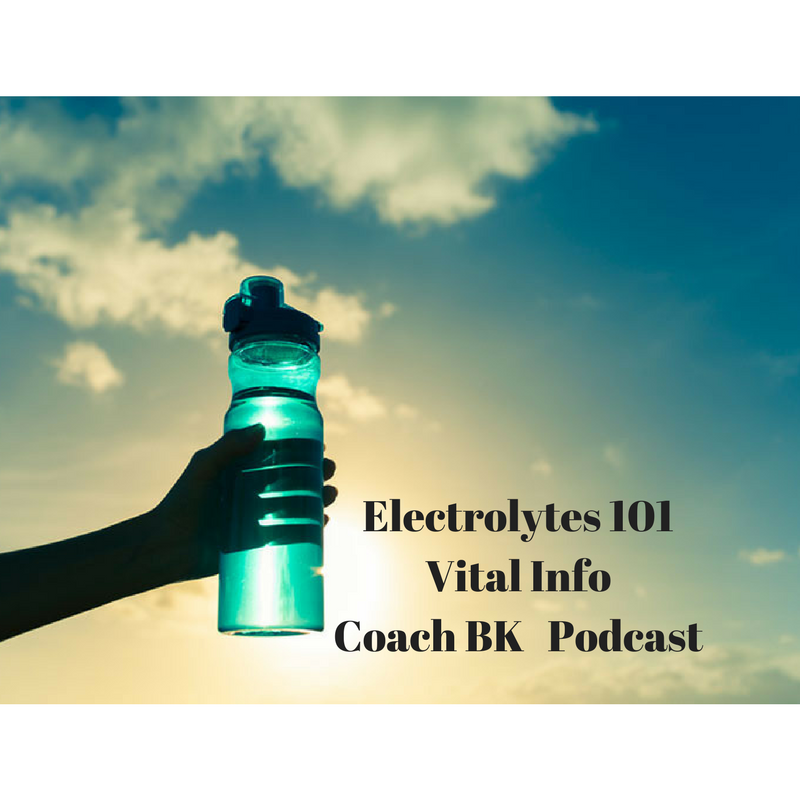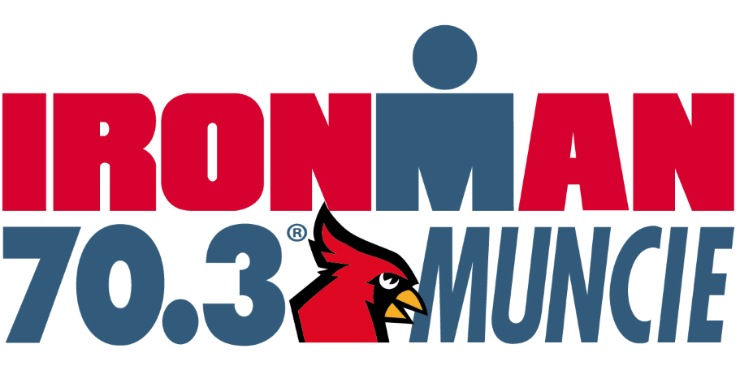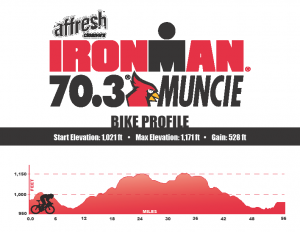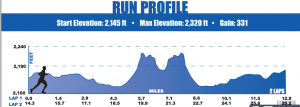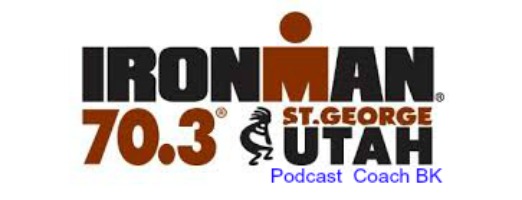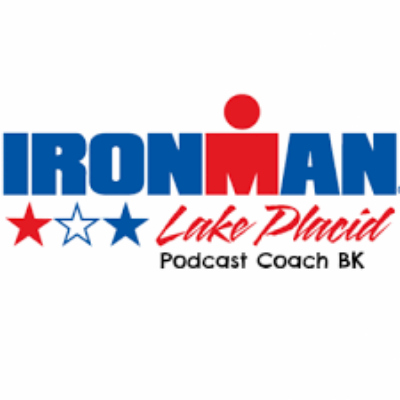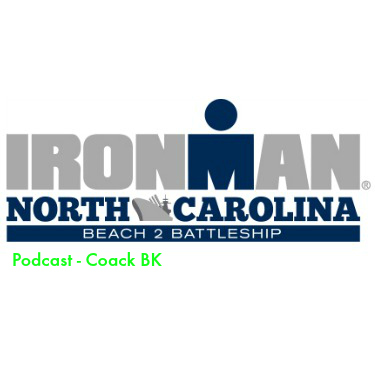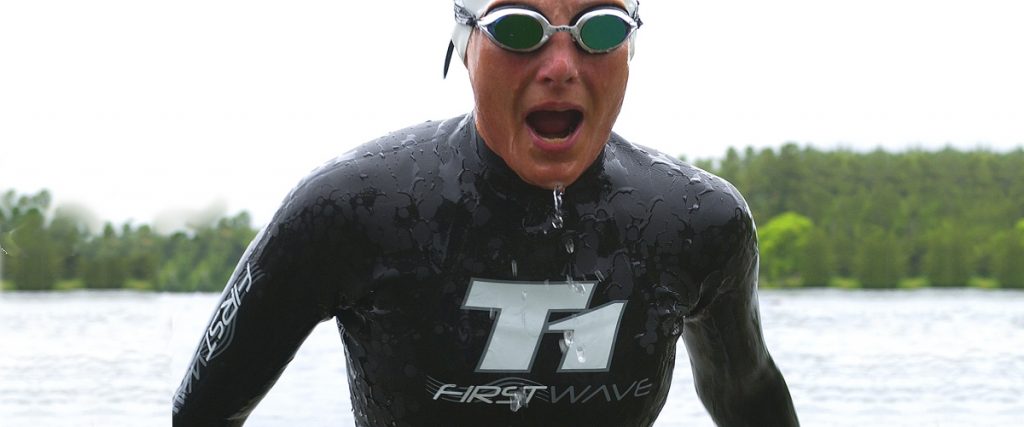Podcasts
#59 Ironman Triathlon Special Needs Bags
[podcast src=”https://html5-player.libsyn.com/embed/episode/id/5564695/height/90/width/480/theme/custom/autonext/no/thumbnail/yes/autoplay/no/preload/no/no_addthis/no/direction/forward/render-playlist/no/custom-color/88AA3C/” height=”90″ width=”480″]
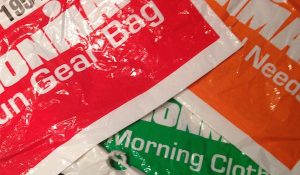 What to do with all of the bags you receive at your Ironman race
What to do with all of the bags you receive at your Ironman race
What the #?$% do I do with all these bags?!
You just checked in at your Ironman race as are headed back to your hotel/condo wondering why did they give me all of these bags – Do I need them? What goes in them? Where do I need to bring them and when*? This can seem a bit overwhelming at first thought, so let’s demystify the process.
There will be 5 bags, each with a specific purpose to be utilized in a particular time and place:
- Pre-swim/dry clothes
- Swim to bike (T1)
- Bike special needs
- Bike to run (T2), and
- Run special needs.
The bags will either come pre-numbered or you will receive a sticker sheet with your race number to place on the bags. It is best to think about what you want to put into these bags well ahead of time. Make a checklist for each bag so that you will not forget a single item. Lists are a way to keep a sense of control at a time when tensions can be high. Having this control and order will go a long way to staying calm during your final race preparation. Let’s take a look at each bag.
Morning Clothes Bag – This bag is for your “street” clothes you wear to transition on race morning and/or your dry clothes for after the race. Don’t underestimate how great it will feel to get on some dry clothes after being in clothes that can be wet and rather gross for so many different reasons. 😉 One item that is always a post-race favorite are flip-flops (aka “slippers”, if you’re in Kona).
Bike Gear Bag – This bag will be placed in T1 during the gear check-in and will have everything that you need for the bike leg.
- Helmet
- Sunglasses
- Socks
- Cycling shoes
- Chamois cream
- Sunscreen (this is often available in T1)
- Arm warmers/coolers (and any other special clothing)
- Race belt with number (if required to wear it during the bike leg)
- Nutrition (calories, hydration, caffeine, and electrolyte tabs – if not stowed on the bike)
- Cycling race kit (if not worn during the swim leg)
Run Gear Bag – This bag will be placed in T2 during the gear check-in and will have everything that you need for the run leg.
- Visor/Hat
- Running shoes
- Sunglasses (if not worn on the bike)
- Race belt with number (if not worn during the bike leg)
- Nutrition for the run (calories, hydration, caffeine, and electrolyte tabs – if you plan to carry some)
- Body Glide
Bike Special Needs – This bag will be available to you, usually right around the halfway point of the bike. This bag will be dropped off race morning*. Some items for this bag include nutritional items and some basic “oh crap” bike repair items. Know that these repair items are purely back-ups and you should carry them and more on the bike with you.
- Nutrition – bottles of your special sauce, gels, bars, caffeine, and electrolyte tabs, etc.
- Something yummy – if things aren’t going well, it can be nice to have a special treat that you know will sound good. I always put a king size Snickers Bar in my special needs bag, just in case.
- Spare tubes/tubular tire
- CO2
- Inspirational note or picture. This is always nice to have… You can even write a note to yourself with some words of encouragement.
Run Special Needs – This bag will be available to you, usually right around the halfway point of the run. This bag will be dropped off race morning. Some items for this bag include nutritional items and comfort items.
- Nutrition – bottles of your special sauce, gels, bars, caffeine, and electrolyte tabs, etc.
- Something yummy – if things aren’t going well, it can be nice to have a special treat that you know will sound good. I always put a king size Snickers Bar in my special needs bag, just in case. Yep, I put one in each of my special needs bags. J
- Comfort items – extra pair of socks, long sleeve t-shirt, etc.
- Vaseline/Body Glide
What you put in your particular bags is a very individual decision. You have control over what you want out there on race day. Know that Murphy’s Law is always in effect during those precious 17 hours. I like to have a system of redundancies. Think of a squirrel stowing nuts away for the winter. Before I had laser corrective surgery, I had contact lenses stashed in every bag… It is better to pack it and not need it, then to leave something out because you “probably won’t need it”. Also, don’t forget to fully utilize your family and friends as Ironsherpas. They will want to help and giving them a specific task, i.e. carrying your equipment and/or dropping off your special needs bags will give them a mission and save you the walk up the road.
*Be sure to read the athlete guide to confirm when and where to deliver each bag.
Electrolytes
Athlete Electrolyte and Hydration 101
(candid notes from the podcast. Listen!!)
INTRO
Coach BK and Endurance Athlete / Nutritionist Rachel Shuck, chat about Electrolytes in a 101 kind of fashion. What the runners and triathletes need to know to perform well, be healthy and be safe.
BACKGROUND
MAIN – What are electrolytes
GOOD DESCRIPTION: Active.com
Electrolytes are minerals that, when dissolved in water, break into small, electrically charged particles called ions. Present wherever there’s water in your body (think blood, cells and cell surroundings), electrolytes regulate your body’s fluids, helping to maintain a healthy blood pH balance, and creating the electrical impulses essential to all aspects of physical activity — from basic cell function to complex neuromuscular interactions needed for athletic performance.
The water then serves as a conductor, allowing ions to move across membranes and carry fluid, nutrients and waste. In the process they trigger nerve impulses and muscle function and allow ions in the blood to neutralize lactic acid as well as other acids dumped into the bloodstream as waste.
OR
- Facilitate thoughts
- Facility all movement
- Control h2o
- Control timing and sequence of “events”
-To be a bit geekie, electrolytes are ions (particles with a charge on them) that control movement of molecules.
-Na, K, Mg, Ca are all positively charged
-Chlorides, Phosphates, Sulphates, Carbonates are all negatively charged.
–The ions (+ -) accumulate in the watery blood system of our body. All of our cells use that (+ -) charge differential as a driving force when they isolate (permit) some ions on the inside of the cell and others on the outside.
In laymen terms: Electrolytes ring doorbells and open doors. Stuff goes in and out.
Main Players are:
Sodium – help “excite” nerves and muscles
Chloride – help “excite” nerves and muscles
Calcium – aids muscle contraction
Magnesium – aids healthy cell function
Potassium – helps regulate pH balance
Phosphate – helps regulate pH balance
What is sweat?
NA 0.9 m/L, K 0.2 g/L, Ca 0.015 g/L, Mg 0.0013 g/L, trace elements, and obviously most h2o
NOTE: Don’t think linearly when looking or listening to the percentages mentioned of the elements and think that they are prioritized as Na more important and Mg less.
YO!!! Did you know that 4 – 10% of your water gets replaced with “fresh” water everyday. Blood is approx 93% water, muscle is about 73% water and body fat is about 10% water.
YO!!!! Also, did you know: during the metabolic process, you make your own water! When muscles burn glycogen (fuel for the mitochondria), they release about 2.4 units of water for every 1 unit of muscle glycogen. :)) COOL UH?!?! This helps the body protect itself against dehydration.
DRINKING
As a rule of thumb we need to be drinking Body Weight x .31. In long distance biking we say about a bike bottle an hour. Tho these numbers are very individualized. This you just need to figure out and train with consistently. It really depends on your sweat ratio. Which a good coach can do.
NOTE: Electrolytes ARE NOT Vit C or Vit B or or or … soooo. Products (and some fancy products) that use the work “hydrate” but have no Na, Ca, Mg or K (chloride comes with them) in them is misleading for electrolyte replenishment, aka helping you to hydrate or USE h2o. Vit C does not help you absorb.
Interesting Factiod. If you don’t have enough sodium, your body produces a hormone, ADH that helps to prevent you sodium to dip too low. This hormone promotes inflammation in your arteries.
HEED THIS ADVICE. Do not take NSAIDS when it’s hot and your training/racing. The prostiglandins produces are large molecules and are damaging to the kidneys.
NOTE: You can’t “stock up” with electrolytes. It doesn’t work like that. The kidneys are highly involved. Let’s assume they are working up to par. You can fill up the tank, but not stock up. The body will balance everything out and get rid of what it doesn’t need at that point.
BACK GROUND INFO:
http://www.bodybio.com/content.aspx?page=elyte-electrolyte-101
The membrane of every cell is composed of fat and acts as an insulator. By encouraging more of the sodium ions to accumulate in the blood stream, outside the cell (with potassium on the inside), they build up a charge on either side of the cell wall. That charge separation then becomes the driving force for all cells to be able to move the life giving materials in and out of the cell. It’s important to understand this because all the electrolytes are vital for cellular function and especially necessary for high performance. Simply put, without them we could not exist… even with the absence of just one of the basic 4 electrolyte minerals, we would be history.
The list of functions that electrolytes control is endless but include; temperature control / fluid level / cardiac arrhythmia / respiratory rate / digestion / fluid transport across cells / ion transport / renal function (bladder control) / neurological function / signal transduction / thought / memory/ all the senses both gathering information and then transporting that message to the brain and to the muscles including the sense of touch / energy production / glucose metabolism etc. etc. It is easier to count the stars in the sky than to list all the functions in the body controlled by electrolytes. But the body, in its miraculous evolutionary way is structured to maintain it all in some combinatorial marvelous life-giving manner. The majesty of it all is so wondrous that the study of cells and of life can often leave one breathless. We frequently sit back in our research as the concepts unfold and are literally awestruck. The most one can attempt is to try and convey a small picture of this wonder.
http://www.bodybio.com/content.aspx?page=elyte-inside-a-muscle-cramp
Cramping is one of the most common complaints of athletes. It can occur at any time but more often at the tail end of their workout. Cramps are a one way street in the complete cycle of muscle action. All body motion is controlled by the opening and closing of ion channels that sit in the membranes of all cells. Sodium (Na) contracts the cell and potassium (K) relaxes it. Similar action occurs to transmit a thought with Na and K triggering neurons (depolarizing) to both transmit and fire. In effect the electrolytes do it all. You can’t blink your eye or even see or hear without them.
A heart cell begins the process with Calcium (Ca) signaling the Na ion channel to open to begin the contraction cycle. There are hundreds of Na and K ion channels on each cell. A half second later Magnesium (Mg) encourages K to rush in which relaxes the cell. That’s the beat of your heart or the closing of your fist. With a heart cell the cycle is non stop; constrict with Na and relax with K. Its quite easy to see what happens when a muscle cramps. In essence you have half a beat. If a cramp hits your heart, you’re history, but in a different muscle you’ll hurt, but recover. If you’re swimming in a race half way home, it could be a disaster. Whenever it happens, it’s the guys in charge of the relaxing half of the cycle, Mg and K, that are missing.
Actually, what is happening, is that the high K concentration is sufficient to complete the back side of the heart beat, or leg pump, etc. Without those 2 electrolytes Mg and K, in plentiful supply, your muscles have only the first half of the action potential to work on. Over time, that’s a one way street, that can end up as a cramp. Cramps don’t usually occur when your doing sprints, they are the result of cellular stress (loss of electrolytes) over long workouts.
THIS IS COOL!!!
A number of coaches have tried “pickle juice” to prevent cramping in hot weather. Pickle juice is predominantly vinegar. Vinegar is acetic acid, and is used to remove sodium (Na) with individuals with high blood sodium levels. The coaches are lowering their athletes Na levels to prevent the first half of the muscle cycle instead of making sure that they have enough of all the electrolytes needed. Lower Na and you may not begin the cramp. Not exactly what the doctor ordered, but it can work.
However, you are removing Na to restore balance, instead of providing the correct electrolytes that the body needs at that moment, which is ……..Mg and K. Training logic says that you want as high a level of electrolytes as possible, all the time, not robbing one, Na, to achieve balance.
Sodium Closes (constricts) and Potassium Opens (relaxes)
In essence, the closing and relaxing of a muscle is dependent on the four mineral horseman of function, calcium (Ca), sodium (Na), magnesium (Mg), and potassium (K). Sodium constricts and potassium relaxes, with Ca and Mg initiating each phase of the action. If an individual is low in potassium, it appears that that singular event of low potassium can be sufficient to permit a cramp to occur. Without enough potassium available to complete the relaxing cycle, a random signal (or even a conscious one) to close by an out of balanced condition can leave almost any muscle in a locked position.
To understand sodium’s influence on the closing of a muscle and potassium’s role in engineering the reverse (the opening), it could be helpful, though somewhat macabre, to examine the procedure for executions. Generally, the act of hanging was replaced by electrocution, which was in turn abandoned by the painless, yet highly efficient act, of an injection of a high concentrated solution of potassium. Flooding the body with potassium forces all muscles to relax. Eventually the concentration of potassium becomes so high that it dwarfs the normal balance with sodium, thereby restricting any ability to affect a normal muscle function. The net result is to block the beating of the heart. In effect the prisoner relaxes to death.
Essentially an execution by injection is the reverse of a cramp. The execution is clearly an excess of potassium and the cramp appears to be the reverse. The injection of potassium overwhelms the normal balance of sodium and robs it of its ability to initiate muscle function; the body cannot begin any function, you couldn’t even blink your eye. The reverse of high sodium (or to be more precise, the absence of sufficient potassium) is an imbalance that sets up a condition for a cramp to occur. The poor individual with insufficient potassium on hand may not be able to relax that muscle and must message or stretch the knotted jumble of muscle to force some potassium into the cells to turn off the tight cramping condition.
The potential cure for a cramp would logically be to have available sufficient stores of potassium. However, magnesium also plays an important role in muscle function, so it is necessary to insure an adequate supply of magnesium. Calcium is also important, but there is a ready supply from our storehouse of bone which appears to be sufficient for muscle function. However, the supply of sufficient Ca and Mg as we age, is often insufficient, even though normal blood test results suggest there is enough. But, that is a subject beyond this current discussion of cramps.
Ironman 70.3 St. George Race Review
[podcast src=”https://html5-player.libsyn.com/embed/episode/id/4902348/height/90/width/480/theme/custom/autonext/no/thumbnail/yes/autoplay/no/preload/no/no_addthis/no/direction/forward/render-playlist/no/custom-color/88AA3C/” height=”90″ width=”480″]
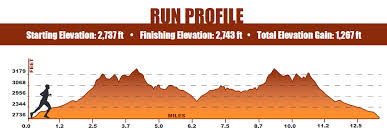
30 Day Paleo Challenge Lecture 2
[podcast src=”https://html5-player.libsyn.com/embed/episode/id/4898486/height/90/width/480/theme/custom/autonext/no/thumbnail/yes/autoplay/no/preload/no/no_addthis/no/direction/forward/render-playlist/no/custom-color/88AA3C/” height=”90″ width=”480″]
Ironman Lake Placid Race Review
[podcast src=”https://html5-player.libsyn.com/embed/episode/id/4883485/height/90/width/480/theme/custom/autonext/no/thumbnail/yes/autoplay/no/preload/no/no_addthis/no/direction/forward/render-playlist/no/custom-color/88AA3C/” height=”90″ width=”480″]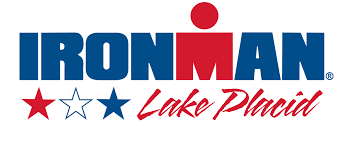
Moira Easton Horan, Amy Stone and and Kristen Larimer chat about the logistics and everything to do with Ironman Lake Placid.
Coach BK offers free athlete health assessments, which includes an online form to fill out and a 30 minute rockstar chat on the phone to go over the form results. Coach BK will provide 3 action steps to help you get to the next level of your training. START HERE >>> Athlete Health Assessment Form

#37 Ironman North Carolina / Beach to Battleship
Coach BK leads a discussion on what the Ironman North Carolina (Beach to Battleship) is all about, how to navigate the pre-race, dinner and race.
She also offers free Athlete Health Assessments.
www.bonniekissinger.com/aha
www.bonniekissinger.com
Check out this episode!
#38 Ironman Wisconsin and similar – All the info you need to know to have a great race
🔆Ironman Wisconsin and Similar Races! IM Chatt, IM Lou, Placid
I love this race. It’s tough with a hilly bike ride with 6000+ feet of gain. And a run with some gain in it as well, with 4000+ according to my Garmin from 2013, but that sounds crazy. A truth, the elevation gains are something people debate. It’s all over the place. But regardless.
<iframe width=”560″ height=”315″ src=”https://www.youtube.com/embed/e-LQaVWEn7k” frameborder=”0″ allow=”accelerometer; autoplay; encrypted-media; gyroscope; picture-in-picture” allowfullscreen></iframe>
YOU DO NEED TO BE PREPARED FOR SOME HILLS
The expo, layout and all of that for this is just amazing balls. The people in general and those on the bike route are simply amazing. You have wonderful people making cookies for the homes along the way and it turns into party time. Even for those that are members of the precious Back of the Pack, you will have music, cowbells and cheers. The venue is wonderful, in the Monona Terrace. The bikes are on the roof in the parking lot. You ride down a helix. You run up. Spectators get to cheer their heads off for you from up top. They get to see a ton of the swim start.
The podcast below has a ton of info so make sure to check that out too!!!
Swim
The swim is now not a mass start, like most swims now. So … you need to prepare yourself to:
🔆Swim straight
🔆Swim strong
🔆Swim swim long
🔆Get use to your wetsuit if needed, learn to put it on well.
🔆Run before you swim
Pool. Drills. Gym. Strength. Yoga. Range of moment. Pool. Mental Grit.
Bike
This is where most of the money is at. There is a lot of rollers and hill work. And good decisions to be made.
DO NOT SKIP DRILLS ON THE BIKE, INTERVALS
🔆You need to have your bike set up well. Hydration. Fueling. Gearing like the rear cassette. Etc.
🔆DRILL WORK to work on efficiency. The pull up, maximize each stroke, but DO NOT be quad heavy
🔆Intervals
🔆Strength training. A lot of it. HIIT!!!!
🔆Learn to shift well. Like how to NOT drop a chain
🔆Practice tough hill repeats, and KNOW KNOW KNOW how to get up those tough hills.
🔆Know bike etiquette. How to bike so you are safe and safe around others. Like what to do when you drop a chain going up a hill at 5 mph.
🔆How to maximize the rollers
🔆Solid hydration and electrolyte plan
RUN
This run is awesome. And is interesting, there are a lot of parts to it. In town. In busy areas. In dark places. Up. Down. In boring places.
🔆Train for hills.
🔆Strength Train
🔆Solid hydration and electrolyte plan
🔆Nutrition nutrition nutrition
NUTRITION
🔆How to handle yourself on the normal day
🔆How to handle yourself when things go sideways
🔆What to do different due to the extra effort needed to get up hills
🔆Plan. Practice. For that BEST FINISHER PICTURE. EVER!!! This is where to do it!!!
💥💥💥💥💥💥💥💥💥💥💥💥💥💥💥
Coach BK and Coach Andrea chat about Ironman Wisconsin, what it is all about, tips and tricks, and how to navigate the pre-race, dinner and race.
💥💥💥💥💥💥💥💥💥💥💥💥💥💥💥
#31 Swim Induced Pulmonary Edema with Eric Knight
Coach BK, certified coach and Eric Knick, seasoned ironman triathlete share their knowledge and experience with SIPE, Swim Induced Pulmonary Edema. This information is to help you become more educated about swimming, issues and what to do about them. This is not intended to diagnosed anyone. If you feel that you need to investigate this area, learn the words and seek out a trusted medical professional.
More information on this issue here.
